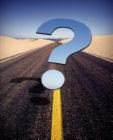1. Computer literacy speaks to me about fundamental knowledge of computer operations, terminology, and methodology. How to use a computer effectively is quite simply this type of literacy. It is more the “how” than the “what.” Information literacy is the ability to access data, concepts, and images from a variety of written, media and digital sources and assemble that information into packaged, organized mental folders. It requires selection from sources, ability to discern value and worth of source materials, and ability to marshal sources towards a goal or learning outcome. Integration literacy is the seamless blending of technology into the classroom, with appropriate activities and problem-solving tasks provided your students, so that networked, integrated learning can take place. This type of literacy requires teachers to orchestrate technological activities and learning tools to match course curriculum and state standards based outcomes, and the blending should be natural and seamless.
2. The “net generation” of students has grown up in the milieus of television, computers, gaming, instant messaging, digital images, iPods, cell phones, etc. The Oblinger article talks of 13-17 year olds, my target group, averaging 3.1 hours per day watching TV, and 3.5 hours with digital media. The reading statistic is not provided for this group, but it is undoubtedly much lower timewise. These students have developed certain traits such as familiarity with digital imagery, rapidly changing attention from one task to another, affinity for social networking, risk-taking and discovery on their own, need for speed and entertainment, etc. The corresponding negatives for us as teachers are a diminished text literacy, the medium in which we still predominantly teach, a reduction in logical, patterned thinking, and lack of singular focus, due to their “bricolage,” a great term for their abilities to piece information together from multiple sources. We learned in more classic ways, text, writing, repetition, lecture, notetaking, but these methods are somewhat out of sync with the net generation way of approaching concepts and problem-solving. Our challenge is to adapt, with the use of technologies and learning strategies based on these technological platforms, so that we can achieve “legacy” learning of which Prensky speaks, in an attractive, useable format tapping the digitial strengths of this generation’s learners.
3. The six national technology standards for students, contained in the ITSE NETS.S, are:
1. Creativity & Innovation
2. Communication & Collaboration
3. Research & Information Fluency
4. Critical Thinking, Problem Solving, & Decision Making
5. Digital Citizenship
6. Technology Operations & Concepts
In my experience, I see 3, 5, & to a lesser extent 6, well implemented. The first step for integrating standards 1, 2, and 4, which are the truly desirable learning activities and tasks, is awareness, which this course is providing us. My knowledge of computers and programs has already increased twofold in a little over a week. Armed with technological knowledge and familiarity with the learning tools, I think I can integrate these standards into my social studies curriculum so that they become embedded within the class structure. Additionally, we need to overcome the fear that we “digital immigrants” harbor towards computers. Teach towards our student’s native strengths, don’t always make them conform to your linear, textual thought patterns.
4. From what I have read, the biggest difference between the school/classroom 1.0 and 2.0 experiences is the degree of connectivity and interaction enabled and required in the latter. 1.0 seems relatively passive to me, surfing search engines for isolated sites where interaction is relatively one-sided and the sites themselves somewhat inflexible and authoritarian. Web 2.0 is an extension of internet technologies and software prowess to allow more democratic, personal, sociable, and interactive platforms to exchange ideas and meaningfully communicate with and among others. Sharing becomes a watchword, and collaboration is enabled in the programs and platforms, encouraging participation rather than observation. I see the incredible worth of this extension to 2.0, and hope for its widespread implementation in our classrooms. It mirrors the digital fluency of our students and allows them to express their individuality and creativity in ways comfortable to them.
5. I thought the del.icio.us site was an extremely useful tool. Once again, instead of having personal “favorites” on your own computer which are not easily shared with other computers, let alone people, the del.icio.us website is a simple yet practical idea, allowing you to build your own favorites, share your favorites with others, and collaborate. I think it will greatly facilitate the construction of the “Teacher Resource Toolkit” in Thursday’s group wiki project, as sharing links is so easy with this program. It also would allow you to build databases of articles and websites for your students to explore and even add to, as it has a collaborative aspect. I also got to see Dr. Smirnova’s favorites which was interesting. This site was easy to set up, easy to use, and adding the toolbar option was a snap. My site address is http://del.icio.us/wmcgillicuddy .
Neverending Quest-ions

Wednesday, May 28, 2008
Subscribe to:
Post Comments (Atom)
Blog Archive
-
▼
2008
(23)
-
▼
May
(9)
- Thursday Night Online (5/29/08)
- A Little Humor
- This Week's Blog Focus (Week of 5/26-30)
- Reflections on TDC Chapter 1 & Digital Natives
- Monday's Online Session (5/26/08)
- Thursday's Online Session (5/22/08)
- Monday's Online Session (5/19/08)
- Personal Education Preferences
- Well, what do you folks have to say?
-
▼
May
(9)

2 comments:
I would like to think that at some point that schools could bring back students to the "Legacy" form and take over what society has created. Wasn't school created to reform students from society and its flaws? Is technology now simply a flaw as reading and writing scores are down across the nation. True students are "reading" and "writing" more but they are not developing their own vocabularies so that they will be able to socially express themselves along the way. Reading and writing the needed amount of quality texts and essays will help a student develop his/her mind in the way that they will need to develop themselves. Students are quicker, but not smarter than the previous generation at all.
William, you wrote a thorough, insightful reflection on the outlined questions. It would be better if you keep the blog's flow more connected, not itemized. All the identified aspects of the week's content are close to each other. It would have been also helpful if you had provided a link to your del.icio.us site.
Post a Comment